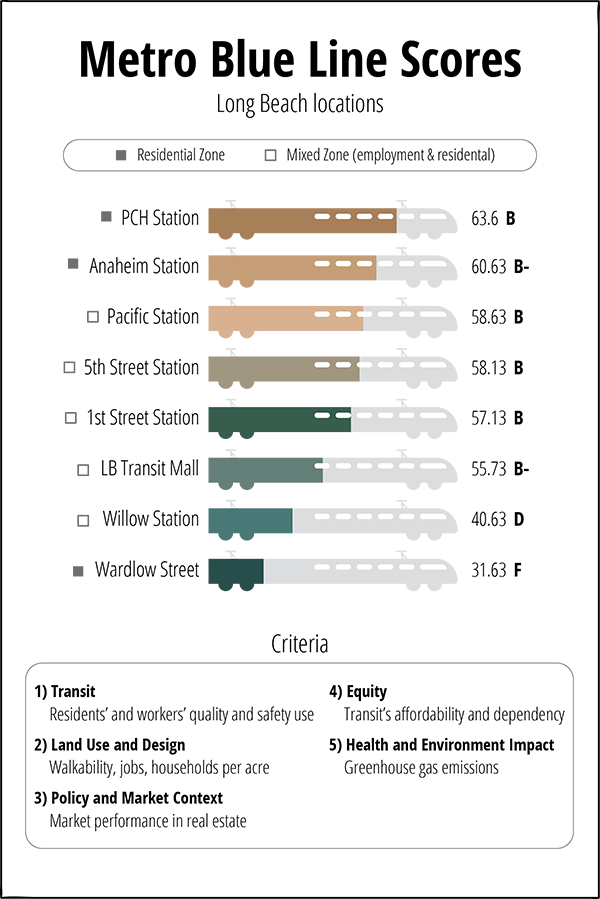Since December of last year, City of Long Beach officials have been moving to implement local police officers to patrol Metro Blue Line Stations in the city. After being postponed, the vote for the motion will be taken this Thursday. But it continues to gain support amongst city leaders, including Mayor Robert Garcia.
According to a January article by the Press Telegram, Garcia has since been elected for a four-year term on the Metropolitan Transportation Authority board — giving him greater influence over Long Beach’s regional transit issues.
The improvement of Blue Line safety has definitely been a concern of not only Long Beach but also officials of greater Los Angeles for some time now. However, the main concern of the metro board and of police officers revolves around the improvement of security response times.
There needs to be a more proactive method to prevent crime on public transit so that daily commuters are not criminalized by the local infrastructure. Supporting vulnerable neighborhoods and residents who use the metro station ensure that people are supplied with tools for living, resources that prevent people from resorting to crime and violence.
The Press Telegram also reports in a February follow-up that the proposal comes as a response to concern over passenger safety and the improvement of officer call time. If the agreement is approved by Metro, Long Beach would receive up to $27 million every year for police service. Long Beach Police Chief Robert Luna believes the increased policing will “improve visibility,” furthermore, “that it will positively impact not only crime but also the quality of life.”
Metro’s Blue Line runs for 22 miles from downtown Long Beach to downtown Los Angeles, with 22 stations in between. The Los Angeles County Sheriff’s Department currently patrols metro stations, according to The Press Telegram.
While city police may be more familiar with the people and the territory, this does not change the way that systematic poverty and discrimination continue to drastically affect areas in Long Beach which are not predominantly populated with middle class, white families or Cal State Long Beach students.
With eight stations in Long Beach, the train provides transportation for many commuters and working-class people – people who do not need to be further policed while trying to get to work, school, the grocery store.
In an open letter to the Long Beach Post, local writer and CSULB alumnus Brian Addison urges Mayor Garcia and the metro board to push multi-agency policing of the Blue Line to finally ensure that Long Beach riders are safe in their commute. He quotes an unnamed working class train-rider: “And when you keep saying the Blue Line is unsafe, what you’re really saying is that those who depend upon it make it unsafe.” The young man Addison spoke to maintained that the Los Angeles County Sheriff does not make him feel more safe, but rather that the Sheriff’s presence was one more threatening and punishing.
With the new proposal, militant police force on Long Beach transit systems will merely be replaced by different cops, stuffed in local uniforms. Mayor Garcia himself stands to this solution, saying it would allow for Long Beach to “control their own destiny,” according to The Press Telegram.
This reinforces Luna’s stance: “No one can patrol or knows their city as well as their own local police department,” as reported in the same article. Yes, the police are familiar with the territory. However, their primary concern is crime and violence, not the substantial structural demands of disadvantaged communities.
The enhancement of safety on public transit is contingent to the improvement of the surrounding neighborhoods. Trains departing from downtown head north into low income communities often, with far fewer privileges.
KPCC and The Los Angeles Times report on a 2015 study done by the Center for Law, Energy and Environmental at UC Berkeley, which grades California trains and subways through a range of criteria. While safety is part of the rating scale, other categories such as accessibility, walkability, affordability and transit-oriented development contributed to light-rail station grades. According to the LA Times, Los Angeles County transit stations graded overwhelmingly average in California — with the highest ranking station in the county being MacArthur Park, a red line station; and the lowest grading station being Wardlow in Long Beach.
Lead author of the study, Ethan Elkind, offers that location plays a key role in the performance of low-grading stations. “[The station has] not stimulated any kind of development or neighborhood type activity around it. That’s really the challenge of Wardlow and other stations that scored poorly,” Elkind tells KPCC in the 2015 report.
Most Long Beach stations scored B level grades on average, With Wardlow and Willow stops scoring F and D, respectively. As the tracks carry on north to Compton, the grades continue to drop. Although safety was just one determining factor, and the study highlights high density places and how this affects the ridership, it is important to pay attention to the relationship between community development, neighborhood crime and how this affects the number of passengers.
If Long Beach residents deem the Blue Line unsafe, they won’t ride; this negatively impacts not only TAP card sales but more importantly, limits the potential of positive impact the train may bring to communities.
Of course, the downfall to community development is it puts low-income neighborhoods at risk for gentrification — which increases costs of living and housing for long time residents, often leading to displacement. But residents deserve to have resources they need to survive in their own community; the support of local business should not be reserved for quirky, “bohemian” communities in Long Beach’s East Village, or Retro Row.
City decisions regarding public transit need to consider the well being of all Long Beach commuters, and how their livelihood is impacted by metro stations. Allocating funds to the local police department might improve response times in emergency situations — but this is a short term solution to a long term problem.




